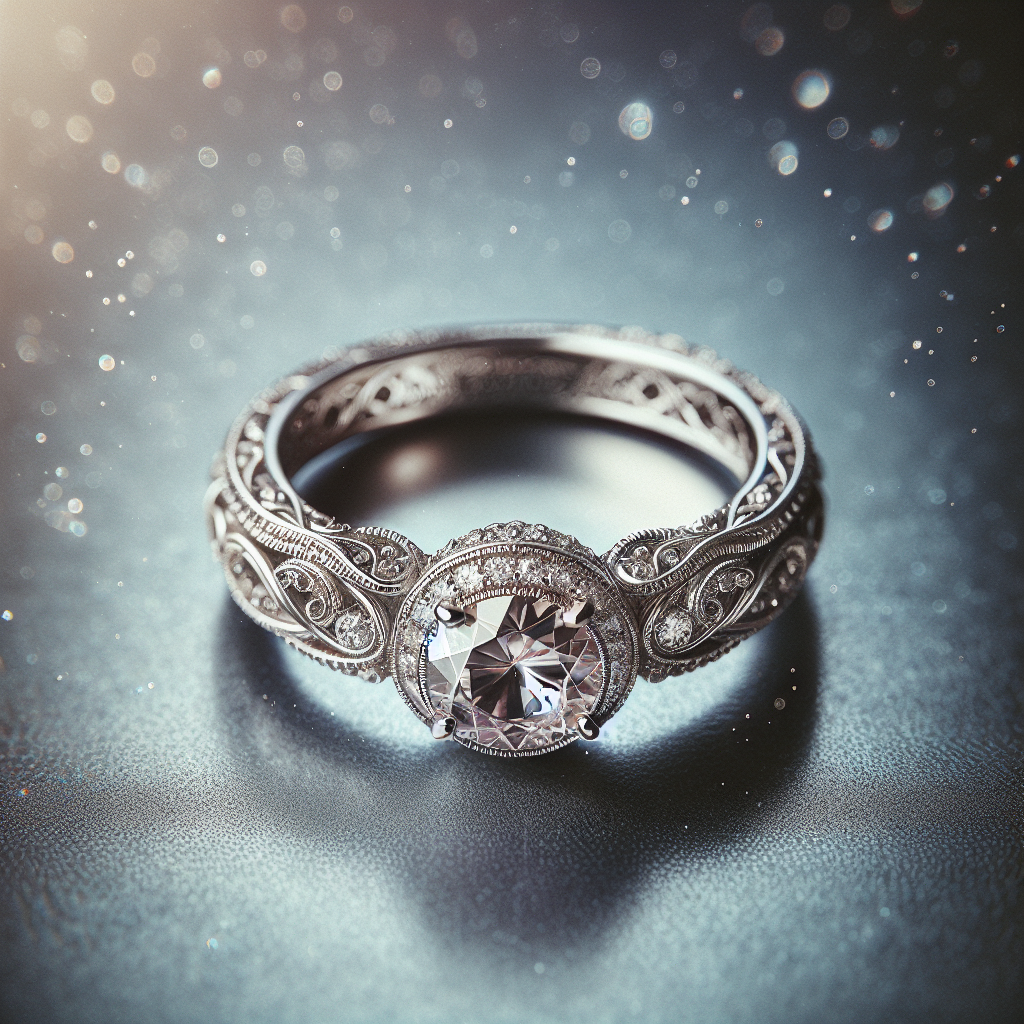Are you ready to turn your passion for photography into breathtaking photos of weddings? Look no further! “Capturing Moments: Wedding Photography Tips for Every Skill Level” is here to help you embark on this creative journey. Whether you’re just starting out or looking to take your skills to the next level, this article provides invaluable advice and tips to capture those special moments that will be treasured for a lifetime. From composition techniques to lighting tricks, get ready to elevate your wedding photography game and create stunning images that will leave everyone in awe. Get your camera ready and let’s dive into the fascinating world of wedding photography!
Understanding the Basics
Know Your Equipment
When it comes to wedding photography, it’s crucial to be familiar with your equipment. Take the time to learn every button, dial, and setting on your camera so that you can quickly make adjustments on the fly. Understand the functions of different lenses and how they can impact your shots. Additionally, invest in quality equipment that can handle the demands of a wedding ceremony and reception, including backup camera bodies and lenses.
Master the Exposure Triangle
The exposure triangle is the foundation of photography, and understanding how aperture, shutter speed, and ISO work together is vital for capturing amazing wedding photos. Aperture controls the depth of field, shutter speed determines how movement is captured, and ISO controls the camera’s sensitivity to light. Experimenting with different combinations of these settings will allow you to achieve the desired exposure for each shot.
Familiarize Yourself with Different Shooting Modes
Your camera offers various shooting modes, such as manual, aperture priority, and shutter priority. Each mode has its advantages, depending on the situation. For instance, if you want full control over every aspect of the exposure, shooting in manual mode is ideal. On the other hand, aperture priority mode may be suitable when you want to control depth of field. Take the time to learn about each mode and experiment with them to discover which one works best for you in different scenarios.
Learn about Composition and Framing
Composition is crucial in wedding photography, as it can greatly enhance the visual impact of your images. Familiarize yourself with the rule of thirds, leading lines, and the importance of balancing elements within the frame. Experiment with different angles and perspectives to add interest to your photos. Pay attention to the placement of your subjects within the frame and be mindful of any distracting elements that may detract from the overall composition.
Preparing for the Wedding
Meet with the Couple to Discuss Their Expectations
Before the wedding day, it’s vital to meet with the couple and understand their vision and expectations for their wedding photography. This will help you tailor your approach and ensure you capture the moments that are most important to them. Discuss details such as the timeline, key moments they want to be captured, and any specific requests they may have. Building a rapport with the couple will also help create a relaxed and comfortable atmosphere on the wedding day.

This image is property of images.pexels.com.
Scout the Wedding Venue
Visit the wedding venue ahead of time to familiarize yourself with the surroundings and plan for different shooting locations. Take note of areas with good lighting, architectural features, and natural backdrops that can be used to enhance your photos. Additionally, scout areas where you can take group photos and portraits, ensuring there is enough space and suitable backgrounds for these shots. Familiarity with the venue will help you maximize your time and capture the best possible images.
Create a Shot List
Having a shot list ensures that you don’t miss any important moments during the wedding day. Talk to the couple and create a list of must-have shots, such as the bride’s entrance, the exchanging of vows, and the first kiss. Additionally, consider including any specific family or group shots that are important to the couple. A shot list acts as a guide and keeps you organized throughout the day, ensuring you capture all the essential moments.
Pack Your Gear and Backup Equipment
On the wedding day, it’s crucial to have all your gear packed and ready to go. Create a checklist to ensure you don’t forget anything important. Pack your camera bodies, lenses, batteries, memory cards, and any additional accessories you may need. It’s also essential to have backup equipment, such as an extra camera body and lenses, in case of any malfunctions or emergencies. Being prepared will give you peace of mind and allow you to focus on capturing beautiful moments.
Capturing the Ceremony
Arrive Early and Prepare
Arriving early at the wedding venue gives you the opportunity to set up your equipment, check lighting conditions, and mentally prepare for the day ahead. Take the time to communicate with the officiant or wedding planner to understand any specific rules or restrictions during the ceremony. Find a discreet spot where you can capture different angles without being obtrusive. Additionally, ensure your camera settings are appropriate for the ceremony setting and make any necessary adjustments.
Capture the Key Moments
The ceremony is filled with emotional and significant moments that deserve to be captured beautifully. Be ready to document the bride’s entrance, the groom’s reaction, and the exchange of vows. Pay attention to the emotions and reactions of the couple, as well as their family and friends. Capture the rings being exchanged, the first kiss, and the couple walking down the aisle as newlyweds. These key moments are precious and will be cherished by the couple for years to come.

This image is property of images.pexels.com.
Use Discreet and Non-distracting Techniques
During the ceremony, it’s essential to remain as inconspicuous as possible to maintain the solemnity and intimacy of the moment. Avoid using flash unless absolutely necessary, as it can be distracting. Instead, rely on natural light or use a low-power and silent flash when needed. Move slowly and quietly, being mindful of your surroundings and the couple’s space. Using a telephoto lens can allow you to capture intimate moments from a distance without intruding.
Work with Natural Light and Flash
Understanding how to work with different lighting conditions is crucial for capturing stunning wedding photos. In venues with ample natural light, such as outdoor ceremonies or well-lit indoor locations, take advantage of the soft and flattering light. Position yourself to make the best use of the available light and consider using reflectors or diffusers to control the light’s direction and intensity. In darker venues or during evening ceremonies, utilize your flash and off-camera lighting techniques to ensure well-exposed and balanced images.
Posed and Group Photos
Communicate and Direct the Subjects
When it comes to posed and group photos, effective communication and direction are key. Make the couple and their families feel comfortable in front of the camera by providing clear instructions and gentle guidance. Direct them into flattering poses and suggest natural interactions to achieve authentic and relaxed expressions. Keep the atmosphere light and enjoyable, cracking jokes or initiating conversations to help create genuine moments that can be captured on camera.
Choose Suitable Locations and Backgrounds
Selecting suitable locations and backgrounds for your posed and group photos will greatly enhance the overall aesthetic of the images. Look for areas with good lighting and visually appealing backgrounds that complement the couple’s style and the overall wedding theme. Avoid distracting elements in the background, such as cluttered areas or bright signage, that may take away from the focus on the subjects. A well-chosen location will provide a beautiful backdrop for capturing these special moments.
Pay Attention to Poses and Expressions
Posing subjects in a natural and flattering way is crucial for creating beautiful and timeless wedding portraits. Pay attention to their body positions, ensuring they appear relaxed, confident, and connected. Encourage them to interact with each other, creating candid and genuine moments that can be captured on camera. Be mindful of facial expressions and remind them to smile genuinely or show the emotions they want to convey in the photos.

This image is property of images.pexels.com.
Consider Different Group Compositions
When photographing larger groups, it’s essential to consider different compositions to ensure everyone is visible and well-framed. Experiment with different configurations, such as rows, diagonals, or staggered groupings, to add visual interest to the images. Use step stools or chairs to elevate shorter individuals and create a balanced and visually appealing composition. Take multiple shots of each group to ensure you capture the best expressions and make any necessary adjustments to the positioning.
Documenting the Reception
Capture the Atmosphere and Decor
The reception venue is filled with decorations, details, and ambiance that contribute to the overall mood of the wedding. Capture wide shots that showcase the reception space, including table settings, centerpieces, and any unique elements that reflect the couple’s style. Focus on capturing the small details that contribute to the atmosphere, such as table cards, floral arrangements, and personalized touches. These images will help the couple remember and relive the ambiance of their special day.
Focus on Candid Shots
Candid shots during the reception capture the authentic and spontaneous moments that make weddings memorable. Keep your camera ready to document guests laughing, dancing, and enjoying themselves. Look for emotional reactions and interactions between the couple and their loved ones. Candid shots provide a genuine and heartfelt representation of the joy and emotions experienced during the reception. Be attentive and ready to capture these fleeting moments as they unfold.
Photograph Speeches and Toasts
Speeches and toasts are an essential part of the wedding reception, filled with heartfelt words and emotional moments. Position yourself strategically to capture both the speaker and the reactions of the couple and their guests. Pay attention to the emotions expressed during the speeches, capturing candid shots of laughter, tears, and genuine reactions. Capture close-up shots of the couple and their loved ones as they listen intently to the heartfelt words being spoken.
Shoot Key Moments like First Dance and Cake Cutting
The first dance and cake cutting are significant moments during the wedding reception, symbolizing the couple’s love and commitment. Capture the couple’s expressions as they share their first dance, focusing on their connection and emotions. The cake cutting is often a playful and lighthearted moment, so be ready to capture the joy and laughter that unfolds. Remember to vary your angles and perspectives to capture a variety of shots that tell the story of these special moments.
Managing Challenging Lighting

Deal with Low-Light Situations
Wedding receptions often involve low-light situations, such as dimly lit venues or evening celebrations. To effectively handle these challenging lighting conditions, use a fast lens with a wide aperture to allow more light into the camera. Increase your ISO to maintain a proper exposure while minimizing digital noise. Utilize your camera’s image stabilization feature or a tripod to prevent motion blur caused by slower shutter speeds. Experiment with different settings and techniques to find the optimal balance between exposure and image quality.
Utilize Off-Camera Flash
Off-camera flash can be a valuable tool for managing challenging lighting situations and creating dynamic and well-lit images. Use a flash or multiple flashes positioned strategically to bounce light off ceilings, walls, or light modifiers for a more diffused and natural look. Position your flash at different angles to avoid harsh shadows and create dimension in your photos. Experiment with different flash setups during your pre-wedding preparations to ensure you are comfortable and confident in using off-camera flash.
Avoid Harsh Shadows and Overexposure
When working with harsh lighting conditions, such as direct sunlight or bright indoor lighting, it’s important to avoid harsh shadows and overexposure. Position your subjects in shaded areas or use a diffuser to soften the light. Meter for the highlights to prevent overexposure in bright areas. Additionally, experiment with different angles and compositions to minimize the presence of unflattering shadows on your subjects’ faces or other elements in the frame.
Use Light Modifiers for Diffused Lighting
Light modifiers, such as softboxes, umbrellas, or diffusers, can help create softer and more flattering lighting for your wedding photos. Attach them to your flash or off-camera lighting setup to diffuse the light and create a more natural and even illumination. Softening the light can enhance skin tones, minimize harsh shadows, and create a more pleasing aesthetic. Experiment with different light modifiers and positions to achieve the desired effect for each shot.
Post-Processing and Editing
Selecting and Organizing the Best Photos
After the wedding, it’s time to sift through your images and select the best ones for editing and final delivery to the couple. Take the time to go through each photo, flagging or rating them based on their quality and importance. Eliminate any duplicates or images that didn’t turn out as expected. Organize your selected images into folders or albums to streamline the editing process and ensure you stay organized throughout.

Basic Edits for Exposure and Color Correction
Basic edits are essential for enhancing the overall quality of your wedding photos. Adjust the exposure, contrast, and highlights to ensure proper exposure throughout the image. Fine-tune the white balance to correct any color casts and ensure accurate skin tones. Make adjustments to saturation and vibrancy to bring out the colors and create a vibrant and visually appealing result. Be careful not to overdo the edits and maintain a natural and timeless look.
Retouching and Enhancing Portraits
Portraits are an important part of wedding photography, and retouching can help enhance the final result. Pay attention to skin retouching, removing any blemishes or imperfections while maintaining a natural look. Soften the skin subtly, being mindful not to remove important details or texture. Enhance the eyes, teeth, and hair for a polished and professional result. Use a light hand when retouching, ensuring the final result remains true to the couple’s appearance.
Maintaining Consistency in Editing Style
Maintaining consistency in your editing style is crucial for creating a cohesive and professional wedding photo collection. Developing a signature editing style can help set you apart and attract clients who resonate with your aesthetic. Experiment with different editing presets or styles until you find the one that aligns with your vision and enhances the overall mood of the wedding photos. Consistency in editing ensures that the couple’s images flow seamlessly and tell a cohesive visual story.
Delivering the Final Product
Creating a Stunning Wedding Album
A wedding album is a timeless and tangible way for the couple to relive their special day. Curate the best images from the wedding and design a visually stunning and well-organized album that tells the story of the day. Pay attention to the flow and arrangement of the images, ensuring they are displayed in a way that evokes emotion and creates a narrative. Select high-quality printing and binding services to ensure the album stands the test of time.
Preparing a Digital Gallery
In addition to a physical wedding album, providing the couple with a digital gallery allows them to share and access their wedding photos easily. Choose a reliable online platform or create a customized website where the couple can view their images and share them with family and friends. Organize the gallery into different categories, such as getting ready, ceremony, and reception, to make it easy for the couple to navigate and relive their special day.
Providing Prints and Other Products
Offering prints and other products, such as canvas prints, framed photos, or thank you cards, allows the couple to display and share their wedding photos in various formats. Collaborate with a professional printing service to ensure high-quality prints that accurately represent your work. Provide the couple with different options and sizes to choose from, allowing them to select the products that best suit their needs and preferences.
Communicating with the Couple
Throughout the process of delivering the final product, clear and effective communication with the couple is crucial. Keep the couple informed about the progress of their wedding photos, including timelines for editing, album design, and delivery. Respond promptly to any questions or concerns they may have, ensuring they feel heard and valued. A positive and open line of communication will help build trust and long-lasting relationships with your clients.
Building Your Wedding Photography Business
Establishing Your Portfolio
Building a strong portfolio is essential for attracting clients and showcasing your skills as a wedding photographer. Select a collection of your best wedding photos that showcase a variety of styles, locations, and emotional moments. Highlight your ability to capture key moments and express the unique story of each couple. Regularly update your portfolio with new images to reflect your growth and capabilities as a photographer.
Marketing and Networking
Marketing and networking are key components of building a successful wedding photography business. Utilize online platforms, such as social media, wedding directories, and your own website, to showcase your work and reach potential clients. Collaborate with other wedding vendors, such as wedding planners or florists, to create cross-promotional opportunities. Attend bridal fairs or wedding expos to connect with engaged couples and establish relationships within the industry.
Pricing Your Services
Determining your pricing structure is an important aspect of running a wedding photography business. Consider factors such as your experience, the quality of your work, and the local market when setting your rates. Research the pricing of other wedding photographers in your area to ensure you remain competitive while still valuing your time and expertise. Be transparent about your pricing and clearly communicate the services and products included in each package.
Maintaining Professional Relationships
Maintaining professional relationships with your clients and fellow wedding vendors is crucial for the success of your business. Respond promptly to inquiries and maintain open lines of communication throughout the entire wedding process. Show gratitude and appreciation for your clients’ trust in your abilities. Collaborate and support other wedding vendors, fostering a positive reputation within the industry. By establishing and nurturing these relationships, you can attract referrals and build a strong client base.
Continuing to Grow as a Photographer
Seeking Feedback and Critiques
Continuing to grow as a wedding photographer involves seeking feedback and critiques from both clients and fellow photographers. Encourage your clients to provide testimonials or reviews of their experience working with you. Welcome constructive criticism from other photographers through online communities or photography groups. Embrace these feedback opportunities as learning opportunities and use them to evolve and refine your skills.
Attending Workshops and Seminars
Attending workshops and seminars specifically tailored to wedding photography can provide valuable insights and knowledge to enhance your craft. Learn from industry experts who can share their experiences, techniques, and advice. Participating in hands-on workshops allows you to practice and refine your skills in a supportive environment. Stay updated on industry trends and advancements through continuous education, enabling you to offer the best possible services to your clients.
Experimenting with Different Techniques
Experimentation is key to growth and creativity in photography. When it comes to wedding photography, don’t be afraid to push boundaries and explore new techniques. Try shooting from unusual angles, incorporating unique lighting setups, or experimenting with different lenses and focal lengths. By stepping out of your comfort zone and embracing experimentation, you can discover new ways to capture and convey the beauty and emotion of a wedding day.
Staying Inspired and Passionate
Passion and inspiration are vital for maintaining a fulfilling and successful career in wedding photography. Surround yourself with photography that inspires you, whether it’s through books, online portfolios, or galleries. Engage in activities that fuel your creativity, such as traveling, exploring nature, or attending cultural events. Take breaks when necessary to recharge and prevent burnout. By staying inspired and passionate about your craft, you can continue to grow and provide exceptional service to your clients.

